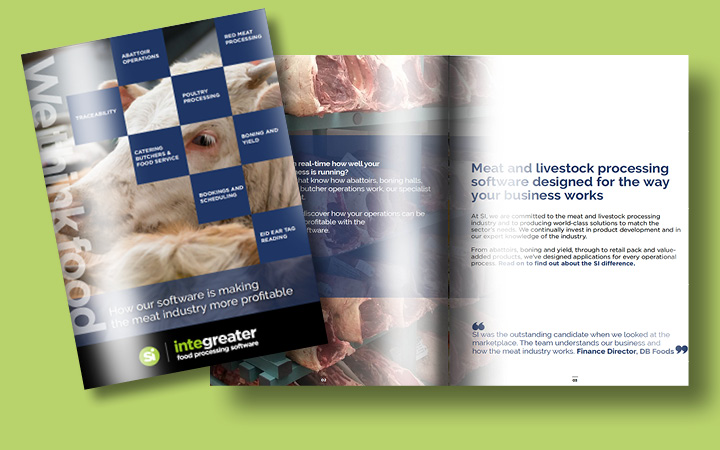
Production Forecasting Software
SI’s Food Production Forecasting Software module systematically predicts demand based on real-time data, and continuously adjusts the prediction ensure the most accurate forecasting.
As part of SI’s real-time food manufacturing planning suite, the Production Forecasting module has been developed to inform a wide range of our modular applications, particularly production planning, scheduling and stock and order.
Production forecasting combines information from:
- Sales team forecasts and predictions
- Customer forecasts
- Stock levels
- Actual orders
By combining this information in real-time and understanding the impact of seasonal spikes, key events like sporting fixtures or school holidays, production forecasting can be refined over time to create a more accurate planning tool.
This provides operations teams the foresight they need to ensure the right staffing levels, in addition to improving relationships with the supply chain, who benefit from more accurate order volumes.
Being flexible enough to change in real-time also means producers have time to ensure the ‘golden rule’ of order fulfilment is achieved, even if additional stock needs to be purchased outside of the business.
A production plan can be a mix of production forecast, sales forecast and sales (actual sales will replace the forecast).
Effective forecasting means that buyers are able to make informed purchases several weeks before customer orders are finalised. They can then negotiate the best price for raw materials.
Similarly, operations staff are able to achieve most efficient use of resources, minimise waste & ensure orders are met on time.
A much brighter forecast
Taking into account the three main ways that food processors compile these predictions, SI’s forecasting software module pulls in real-time data and makes the most of its advanced reporting tools.
THE CUSTOMER FORECAST
Often, when food processors are dealing with retailers, they will be provided with an Excel file. This file, lists whatever the retailer is anticipating to buy. These lists are typically inaccurate. Based on this information and the customer’s sales history, the food processor will normally produce its own sales forecast. This is normally based on sales history, producing a new sales forecast.
SI’s sales forecasting goes a step further, by using its inbuilt reporting tools. Our software compares through reporting and forecasts versus actual sales orders. Providing a far more accurate sales forecast and one that can be further refined over time.
THE SALES FORECAST
This forecast focuses on what needs to be produced to meet the sales orders.
SI’s sales forecasting also informs our stock and order module. It highlights whenever raw materials need to be re-ordered, based on the sales forecast and known sales.
Together, these three forecasts inform SI’s Production Planning module.
THE PRODUCTION FORECAST.
Then production forecast takes into account what the food processor expects the requirement for production to be. (independent of the sales forecast) Also, whatever needs to be held in stock.
Production forecasting that supports both short and long-term planning
For food processing sectors like fish production and catering butchers, production forecasting can support better planning, pushing out to three to four weeks. Similarly, with cheese production, forecasting can be pushed out for years, to cope with the length of maturation needed in this industry.
With SI, now food processors can produce a forecast as far in advance as required. For instance, cheese producers may want a forecast for up to two years in advance, but in the case of more perishable goods, a matter of weeks will be sufficient.
The trouble with food production forecasting
The trouble with standard forecasting is that predictions will always be inaccurate if the data provided isn’t reliable, and it’s difficult to take into account the impact of short product life and last-minute order changes. Production and sales demand can only be met if the food processor has sufficient raw materials, packaging and labour resources, and can predict upcoming orders.
The knock-on effects of inaccurate forecasting results in problems with raw material stock and inability to meet sales orders. For some food processors, overstock will involve having to freeze any surplus. Whereas insufficient raw material forces last-minute stock purchases and the potential to miss customer delivery deadlines.

